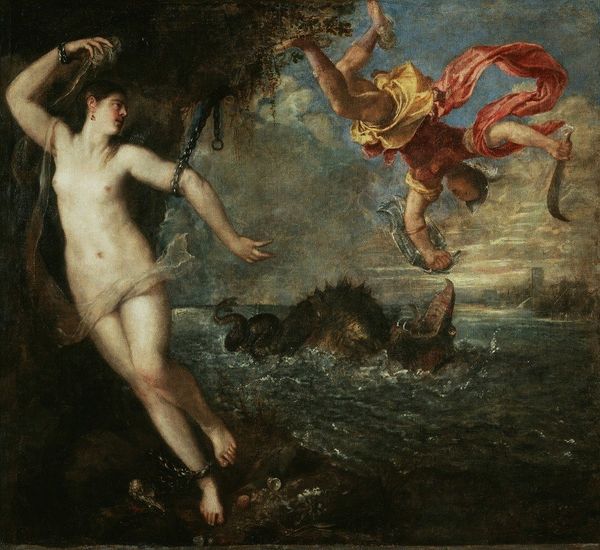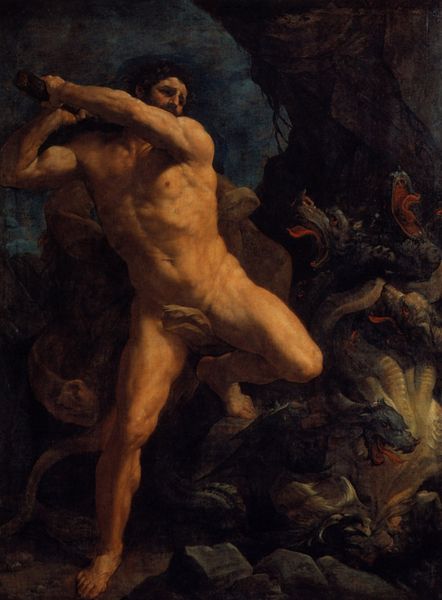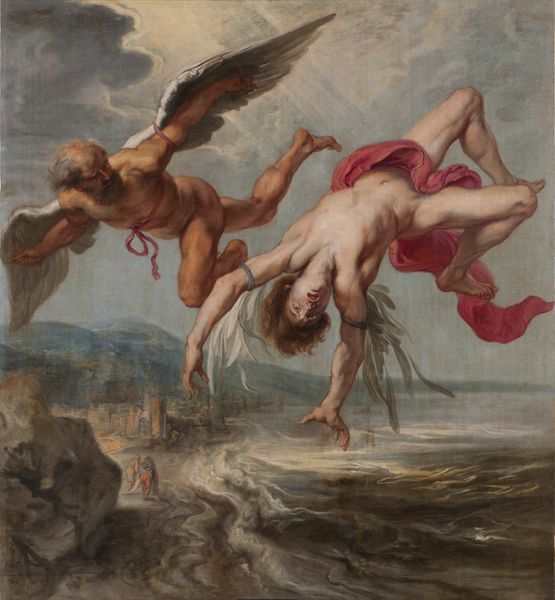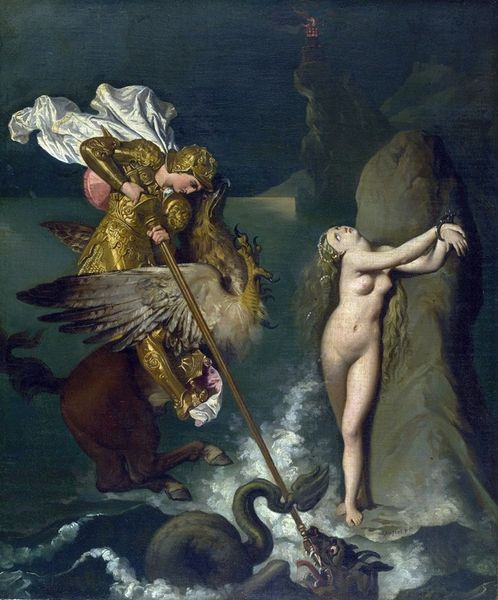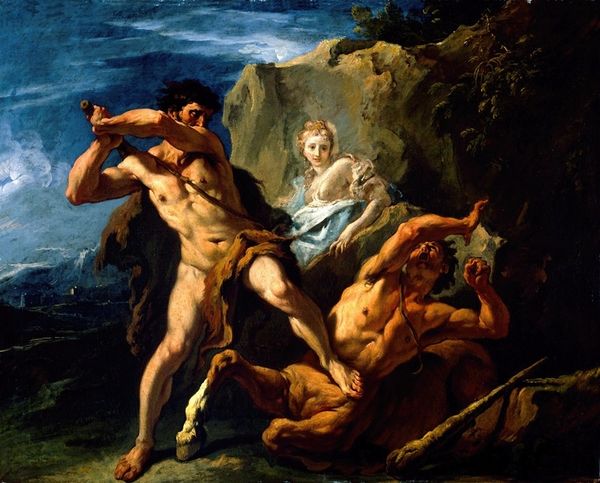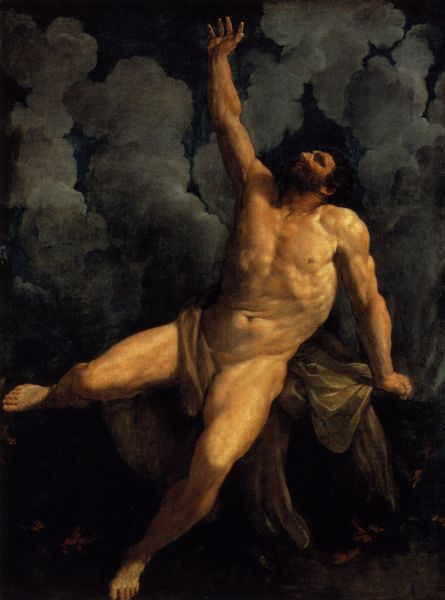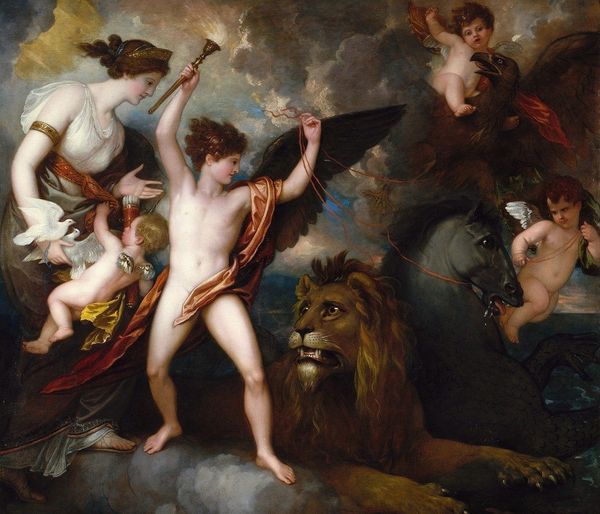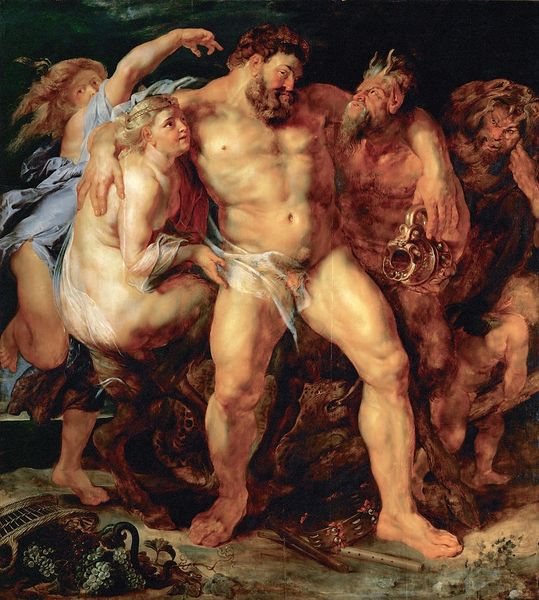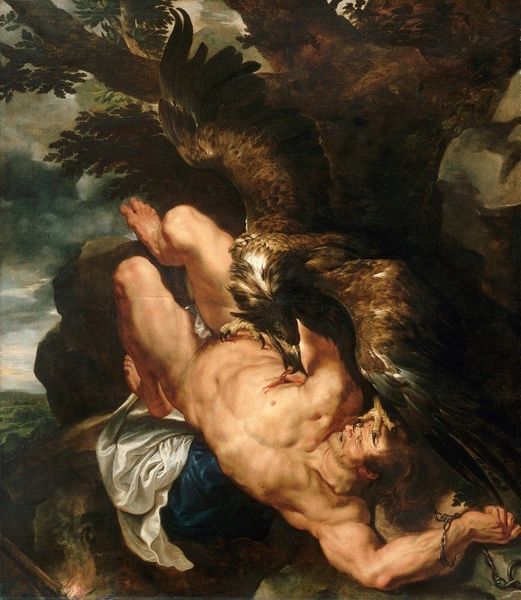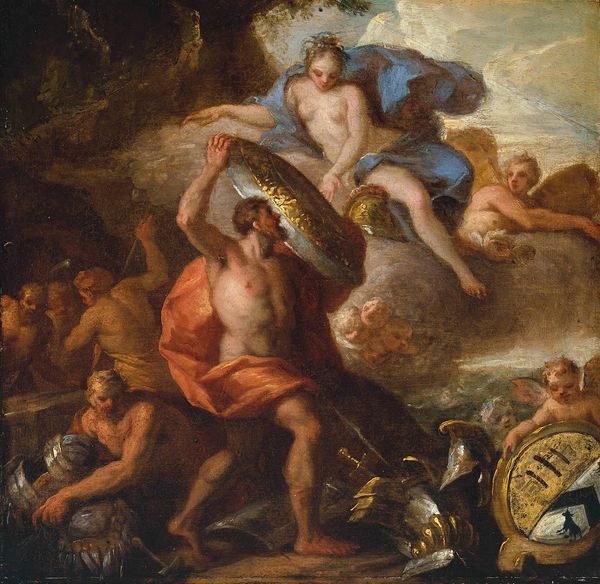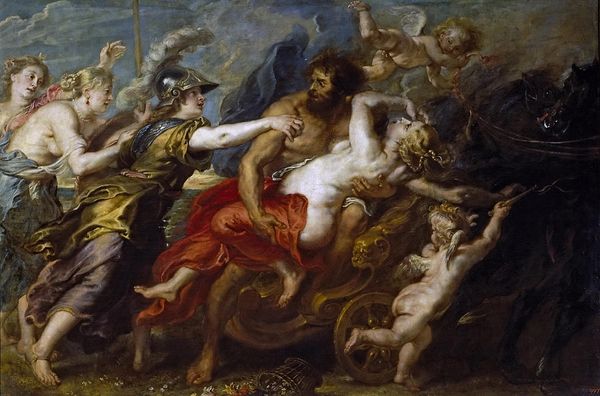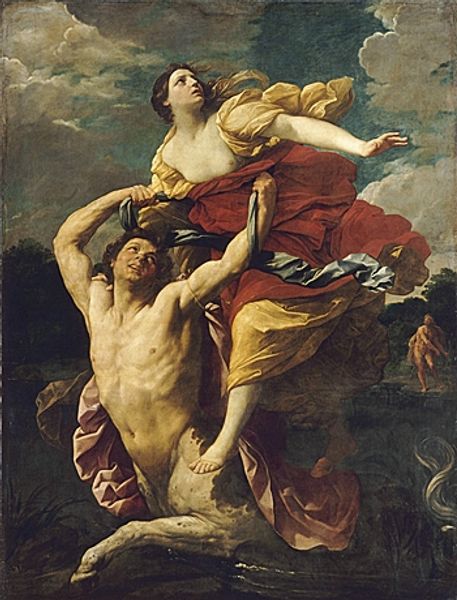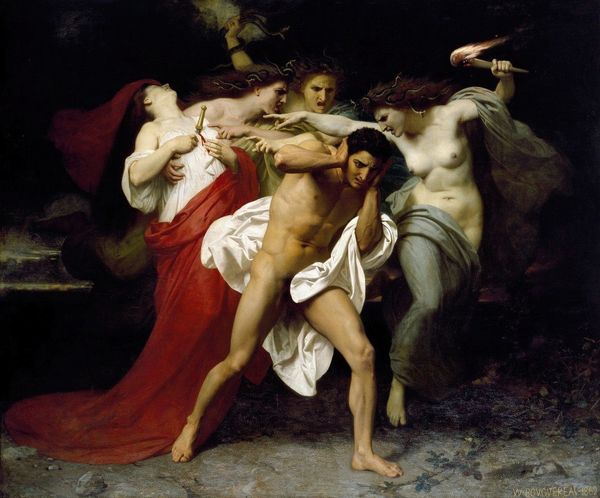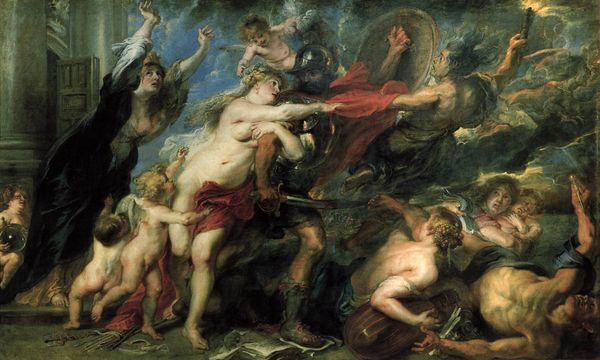
painting, oil-paint
#
allegory
#
baroque
#
painting
#
oil-paint
#
figuration
#
oil painting
#
roman-mythology
#
mythology
#
history-painting
#
italian-renaissance
#
nude
Copyright: Public domain
Curator: We are looking at “Andromeda”, an oil painting currently held in the National Gallery, London, attributed to Guido Reni, although the precise date remains unspecified. What's your initial response to it? Editor: Well, right off the bat, it's quite dramatic. The composition is striking, with this gorgeous woman chained to a rock and this incredible sea monster looming, set against a really turbulent sky. And there is also Perseus on his flying horse! You immediately understand she’s about to be in a very dangerous situation. Curator: Absolutely. Reni masterfully captured this crucial moment from the Greek myth. But think about it, these weren't just pretty pictures for Reni’s contemporary audiences. They were loaded with meaning. Consider how the story of Perseus rescuing Andromeda, who was sacrificed to a monster as a form of appeasement, was probably interpreted in different ways by diverse viewers depending on the social class to which they belonged at the time. Editor: Speaking of materials, I am interested in how the surface of the oil paint creates this soft texture almost rendering the human body to resemble an unglazed ceramic. This technique softens the starkness of the allegory. Curator: Yes, and there’s also something political here too, isn’t there? The nudity, the damsel in distress – were these purely aesthetic choices? Or was Reni engaging in a bit of visual rhetoric for his time, reinforcing power structures and expectations? Also the institutional history matters. These depictions are often owned and then viewed mostly by wealthy men. Editor: I would assume that it is no accident Reni chose those pastel colours to highlight Andromeda’s vulnerability and heroism. Her chained hands look to be constructed of metal, however, emphasizing this restriction, or maybe forced labour. Curator: Her pose feels calculated, almost theatrical. She is not looking at the beast but has turned away as though shy about the unfolding scenario. Editor: Yes and the rendering of Perseus up in the air in comparison with that heavy, tangible monster. It is more than good versus evil it seems! There are nuances, and levels to the conflict Curator: Reflecting on Reni’s work within the grand scheme, I'm still pondering the layers of socio-political commentary interwoven within seemingly straightforward mythological scenes. Editor: I agree. Ultimately it makes me wonder what sort of resources Reni could have harnessed for his craft, the labour required to create these pigments, brushes, and canvas.
Comments
No comments
Be the first to comment and join the conversation on the ultimate creative platform.
